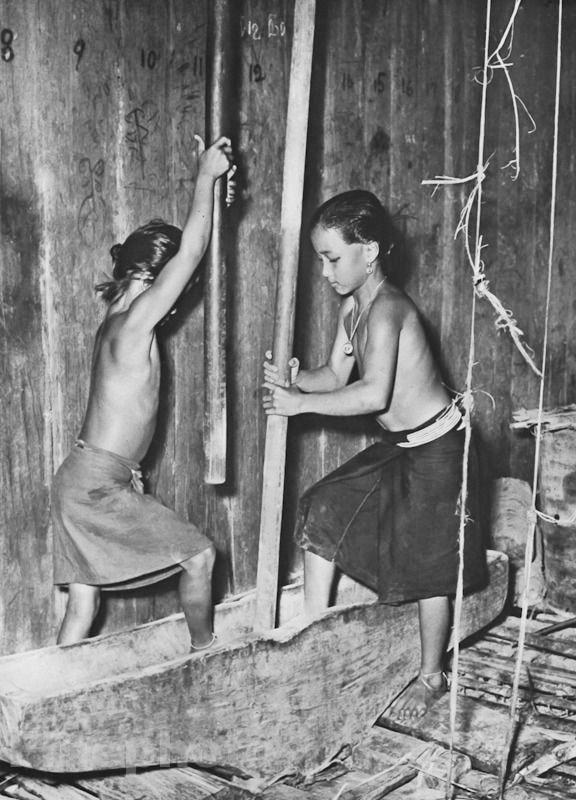
The Pacific War: Food--Japanese Occupation Policies

Figure 1.--There were food exporting areas in Southeast Asia including the Dutch East Indies (Indonesia), but much of the territory seized by Japan after Pearl Harbor consisted of eithr areas dependent on food imports (northern Vietnam) or practiced subsistence agriculture unable to support large Japanese garisons. Here we see a scene on Borneo (perhaps Sarawak) just before the War illustrating the primitive methods. The girls are pouding padi. Even so the Japanese policy was that every area or island should become self-suficent in food. The result was not only the terrible famines suffered by the local population, but actual starvation of Japanese garrsisons throughout the Pacific. Photo: K.F. Wong
|
|
Japanese occupation policies were disaterous for both the local people and for the Japanese themselves. A core policy was that every occupied area should become self-sufficient in food. This created terrible conditions in the areas that were dependent on food imports before the War. This included areas both within and outside the enpanded Japanese Empire. And brutal Japanese occupation policies reduced harvests through out the Japanese controlled areas. A major problem was that the ares seized were not modern countries. There was little industry and the agriulturl methods were not modern, but often based on ceturies old technology. This meant that on most Pacific islands that agriculture was subsistence agrciculture. This was the case not only on small islands, but also large islands like Borneo and New Guinea. Thus while the islands were genrally self sufficent in food, there was no large surplus and the local population were not able to feed large Japanese garrisons. And Japanese policies and the brutality used to carryit out, just made matters worse. Where able, the local populations simply melted into the interior beyond the reach of the Japanese. They could be hunted down, but this would have required a huge effort and the xpenditure of supplies the Japanese did not have. There were surplus producing areas such as Java, southern Indo-China, and Burma. But Japanese occupation policies such as seizing food from the local people resulted in reduced harvests. In short rather than maximizing production in the occupied areas, the result of the occpation was to minimized production.
CIH -- WW II

Navigate the CIH World War II Section:
[Return to Main World War II Pacific campaign--Food page]
[Return to Main World War II Pacific campaign page]
[Return to Main Japanese strategic concepts page]
[Return to Main World War II: Food page]
[Biographies]
[Campaigns]
[Children]
[Countries]
[Deciding factors]
[Diplomacy]
[Geo-political crisis]
[Economics]
[Home front]
[Intelligence]
[POWs]
[Resistance]
[Race]
[Refugees]
[Technology]
[Bibliographies]
[Contributions]
[FAQs]
[Images]
[Links]
[Registration]
[Tools]
[Return to Main World War II page]
[Return to Main war essay page]
Created: 6:11 PM 1/13/2018
Last updated: 6:11 PM 1/13/2018



